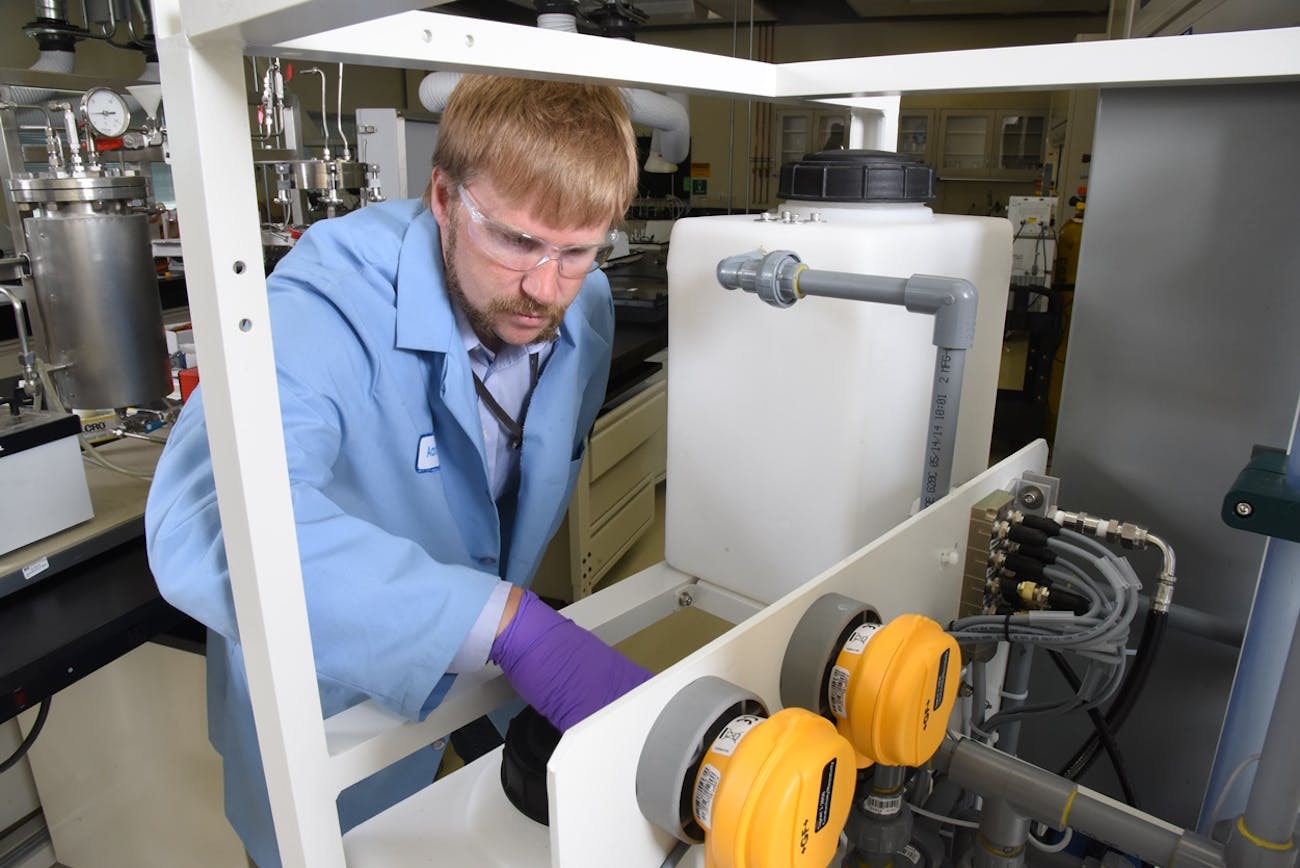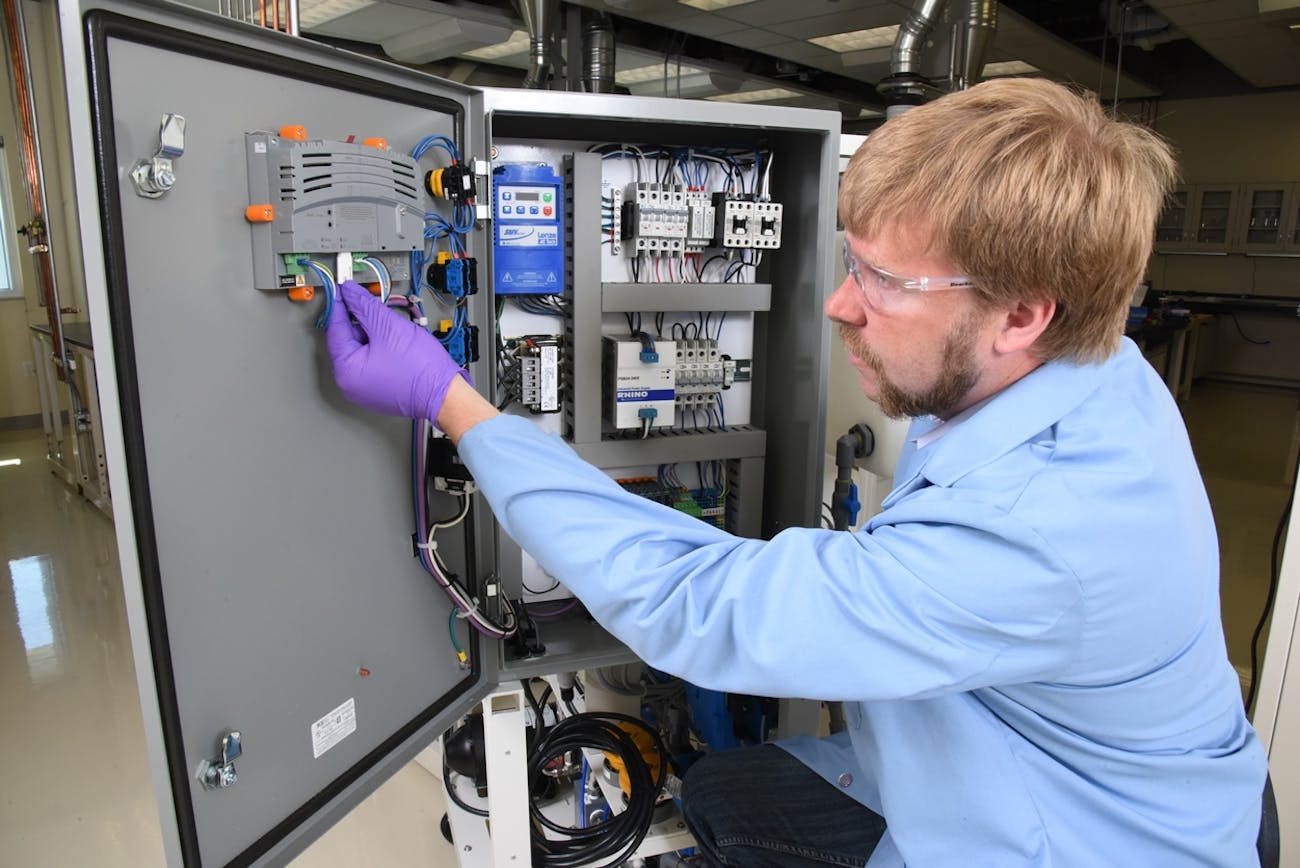Although Aaron Wilson is getting used to winning awards, the 38-year-old Idaho National Laboratory researcher would still rather be focusing on fundamental science.
The Greater Idaho Falls Chamber of Commerce’s Young Professionals Network has named him one of this year’s “Distinguished Under 40” award winners, who are being honored at a luncheon on Sept. 29. Whether he will be able to draw anyone at the table into a discussion of Switchable Polarity Solvent Forward Osmosis (SPS FO) is anyone’s guess. He recalls a talk he gave to the Kiwanis Club after winning an R&D 100 Award for his work in 2013.
“People want to hear about outcomes,” he said. “I work at a very fundamental level. My interest is in thermodynamics of molecules, concentrated solutions and how they interact with membranes.”
What Wilson and his INL team have discovered is that freshwater can be extracted from wastewater by having a more concentrated switchable polarity solvent on the other side of a very fine membrane. The concentrated solution pulls the water through the membrane, leaving the contaminants behind. Then the water can be extracted from the solution with low-grade heat.
A trailer-mounted SPS FO system could take enough water from a wastewater pond to fill an Olympic-sized swimming pool in a week. The biofuels, petroleum and natural gas industries have taken note of the work, as have other scientists, like Dr. Menachem Elimelech of Yale University, internationally recognized for his pioneering research into using forward osmosis for water desalination. In a recent review for the scientific journal Desalination, Elimelech’s team cited the INL technology as one of the most promising new developments in the field.
Wilson recognizes the need to talk about the real-world possibilities for his research. If it can help solve the wastewater problems associated with hydraulic fracturing or bring new supplies of freshwater to an increasingly thirsty world, that’s fine with him. Nevertheless, what pleases him most is advancing scientific communities’ understanding of fundamental phenomena.
Growing up in Brunswick, Maine, next to Bowdoin College — not far from Freeport and L.L. Bean — Wilson said he enjoyed science, math and art. “I’ve always been generally curious,” he said.
Graduate school at the University of Colorado Boulder and postdoctoral appointments at the California Institute of Technology and National Institutes of Health were where his passion for learning and understanding things came into full flower. He found he enjoyed “just purely exploring stuff and publishing.”
Boulder was also where he met his wife, and the two decided they wanted to live in the Mountain West. “I was geographically driven in my life choices,” he said. “My goal was to get back to the Rockies, but there are only so many jobs for Ph.D. chemists in the Rockies.”
He learned about INL at an American Chemical Society meeting, where he met Dr. Eric Peterson, Research Partnerships and Strategy Development lead for the Center for Advanced Energy Studies at INL. Later, they discovered a mutual enthusiasm for rock climbing and the shared experience of having climbed El Capitan in Yosemite National Park.
Wilson came to Idaho in 2010 and said his first year was mostly “working as an in-lab technologist in project support.” During this time, he was free to think about potential research avenues like water treatment technologies.
His aha! moment came while reading an article in a scientific journal about how switchable polarity solvents were being used to draw oil out of vegetables. At the top of the printout he scribbled “Potential … for forward osmosis,” and that night, he hardly slept for wondering whether someone else had already made the connection.
No one had, and Wilson received support through INL’s Laboratory Directed Research and Development program to bring his concept to life. In the three months that followed, his team published its first paper and filed a patent application. Following these initial disclosures, Wilson was able to gain an industrial collaborator and won his R&D 100 Award.
As someone doing fundamental science and converting it into real-world applications, Wilson said he believes INL’s future lies in doing more of the basic work — more scientific papers and more citations in other scientists’ papers, which helps to build capability that leads to deployment of technology in the marketplace.
“If you do the good work, you’re going to have the ammunition to address the practical aspects of research and technology development,” he said. “We need to engage industry and recruit high-caliber talent to tackle today’s and tomorrow’s challenges.”





